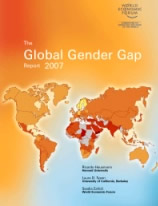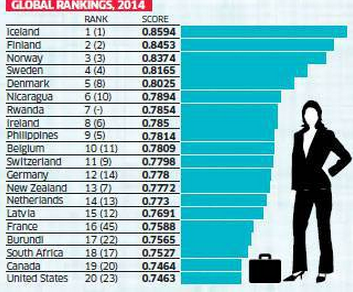


| Every year the World Economic Forum issues the Global Gender Gap Report aimed at capturing the magnitude of the gap between women and men in four critical areas: economic participation and opportunity, political empowerment, educational attainment and health and survival. |   |
 |
|
In the European Union only 58.8% of women are employed. The employment rate for men is 69.4%. |
The main reason for this lower female employment rate is that women spend considerably more time on family and household responsibilities, making it difficult for them to participate fully in the labour market. |
The difference between the amount of unpaid work carried out by European men and women is huge. This is the case across all age groups, but it is particularly important for those aged 30 to 45. |
Western European women were having an average of 2.4 children each in 1970. That figure has fallen to 1.5 in 2013. |
All across Europe men are paid more per hour than women for doing the same job. |
Men are overrepresented at the upper end of the income distribution scale and there are roughly twice as many women than men among those on low pay. |
In Austria women earn on average only 60% of their male counterparts. Austria is therefore
one of the countries with the highest gender pay gap in Europe. |